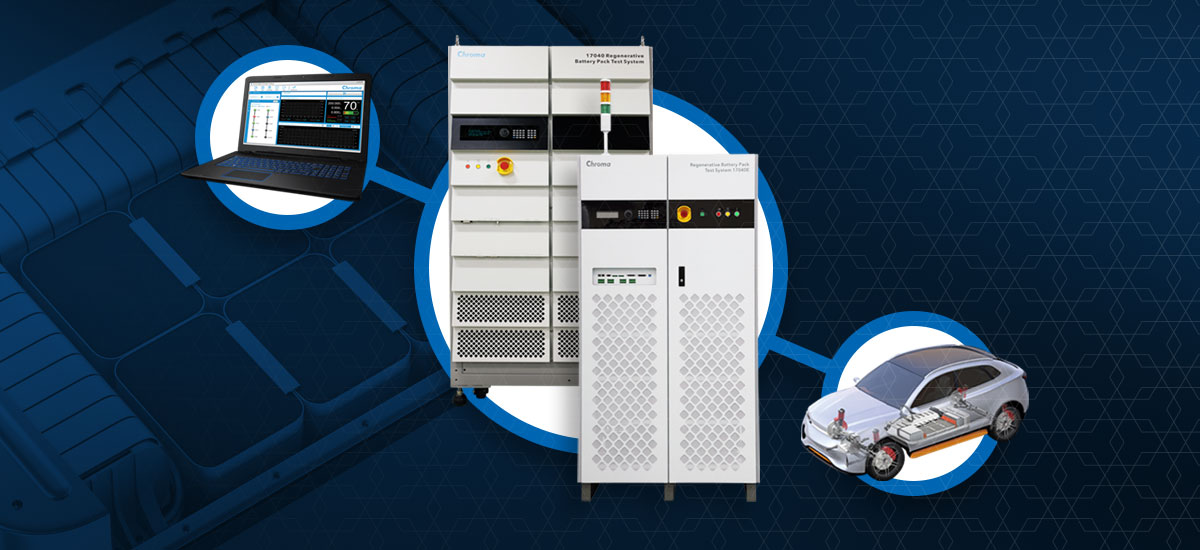For testing battery-connected devices like electric vehicles, on-board chargers, DC-DC converters, and motor drivers, high-power battery simulation is a great solution to confirm if the device under test is performing as intended. For example, most DC fast charging devices on the market have a power range of up to 50kW-350kW. Because of that high output voltage and power, it’s easier, faster, and safer to replace the actual battery pack with a scalable battery simulator like our regenerative 17040 battery test system. This allows emulation of the device under test’s electrical boundaries in a safe, repetitive and predictable routine.
Integrated with any of our regenerative battery testers or bidirectional DC power supplies, our software simulates the battery state removing the wait time for the charge/discharge of an actual battery. Real-time test results include voltage, current, power, SOC%, charge/discharge state, and capacity. In addition, when you need to perform battery charge/discharge testing, the 17040 allows you to switch from battery simulation to battery cycling directly.
So when testing battery-connected EV devices, ditch the battery. It’s better to set up a Chroma 17040 with our battery simulation software, and here are a few reasons why:
- No battery swaps. Values for internal resistance, energy capacity, and output voltage can be changed in real-time
- Allows safe, repetitive and predictable emulation of the device under test’s electrical boundaries
- Safety features such as real-time monitoring and automatic protection
- The regenerative function enables energy reuse, reducing the cost of treating wasted heat
- Direct switching between battery charger/discharger and battery simulator functions
